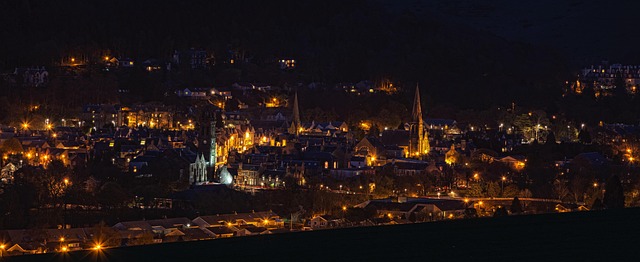When stepping into the world of photography, one of the most captivating concepts you’ll come across is dynamic range. This term refers to the spectrum of light that a camera can capture, ranging from deep shadows to bright highlights. Understanding the dynamic range is crucial, as it fundamentally influences how you experience and convey the visual narrative through your imagery. In essence, it’s all about the camera’s ability to handle the complexities of light and shadow.
Dynamic range plays a pivotal role in how your photos will ultimately look. Cameras can only capture a specific range of brightness, and this capability is significantly influenced by the optics involved. A lens with superior optical performance enhances the ability to retain details in both the very bright and very dark areas of an image. Imagine standing at the edge of a vibrant sunset, the warm colors melting into the cooler shades of twilight. A camera equipped with a wide dynamic range can beautifully encapsulate that moment, ensuring that the glow of the sun and the subtle details of the shadowed foreground coexist harmoniously.
When you look at images, it’s not only about what is seen through the lens, but also about what is made visible through the mastery of dynamic range. A camera’s ability to manage this aspect often determines the authenticity of the photo. As photographers, we seek to capture what we see—not just in a literal sense, but in an emotive one. When a scene’s shadows are too dark, or highlights are overly blown, it can distort the intended message and feeling of the image. A camera with a rich dynamic range allows for a seamless transition of tones, making it easier to tell a story through various light conditions.
The aesthetics of photography are often enhanced through dynamic range. It provides photographers the flexibility to shoot in diverse lighting conditions, from the harsh midday sun to the dim light of a cozy café. Each setting poses its challenges, but with the right tools and a solid understanding of dynamic range, you can elevate your photography beyond the ordinary. The intricacies of highlights and shadows can transform an otherwise mundane image into a striking piece of art.
Moreover, post-processing plays a significant role in manipulating dynamic range as well. Photographers often rely on editing software to boost shadows or tone down highlights, aiming to bring their vision closer to life. Here lies the beauty of digital photography; with a little finesse and understanding of your camera’s capabilities, you can enhance the narrative your images tell. Remember that each camera has its unique strengths when it comes to dynamic range, so exploring various models can help discover what best aligns with your artistic style.
As you delve deeper into photography, pay close attention to dynamic range. It’s a dialogue between your camera’s hardware and the optics it employs, teaching you not just the mechanics of the craft but also the emotions tied to light and shadow. With every click of the shutter, there’s an opportunity to explore the unexplored, to find the hidden nuances that lie in the interplay of brightness and darkness. Embrace the magic that dynamic range brings into your photographic journey, and let your camera help you communicate more than just visuals, but feelings that resonate with viewers.


